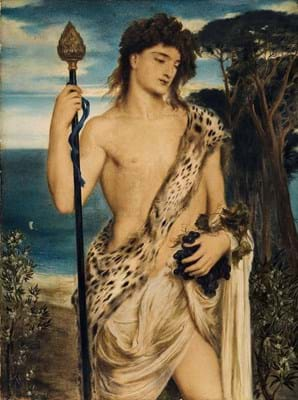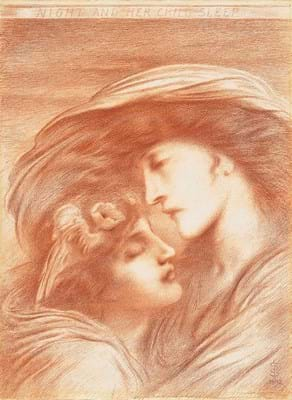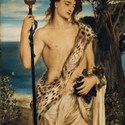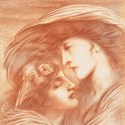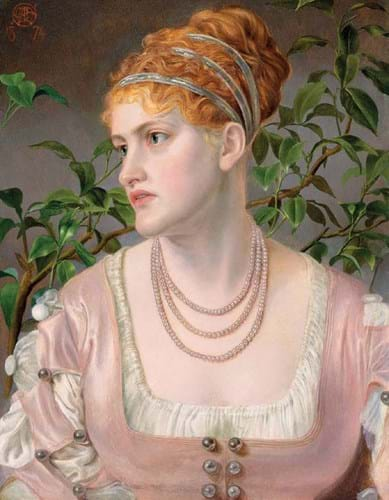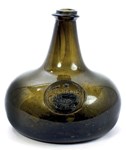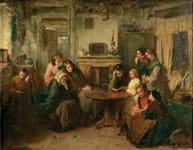With pictures by Dante Gabriel Rossetti and Edward Burne-Jones in short supply during the latest Victorian art sales in London, it fell to lesser-known names to feed the current market’s appetite for all things Pre-Raphaelite.
A large group of works by Simeon Solomon (1840-1905), the tragic painter known for his intense depictions of androgynous heads and same-sex desire, drew much of the demand, closely followed by female artists, especially those associated with the Pre-Raphaelites.
Together, Sotheby’s and Christie’s (25/20/12.5-12.9% buyer’s premium) offered 35 works by Solomon on July 11-12, which contributed a weighty £956,000 to the £9.94m series total.
A child prodigy who showed his first painting at the Royal Academy aged 15, Solomon was a notable force in the Pre-Raphaelite movement until an 18-month prison sentence for indecency ruined his career in 1873.
The artist was shunned by Victorian society and turned increasingly to alcohol, ending his days in a workhouse in Holborn.
But after nearly a century of obscurity, Solomon’s reputation is flourishing once more. Six of his pictures opened Tate Britain’s 2017 exhibition, Queer British Art 1861-1967, while the top five prices for Solomon at auction have come in the last five years, bucking the trend for the majority of Victorian artists.
Rising reputation
“The market is mirroring the growth of his reputation generally,” said Harriet Drummond, director of British drawings and watercolours at Christie’s. “The great thing about Solomon is that, given he’s still less known than most Victorian artists, his work is very affordable, especially for the quality it has.”
Victorian art dealer Rupert Maas of the Maas Gallery in London told ATG: “Although not a talent in the same league as [Edward] Burne-Jones, the recent rehabilitation of Solomon’s atrocious Victorian reputation, and the celebration of his wild Romantic vision by the market, is in the spirit of the modern age.”
Extensive Solomon group
A 26-lot private European collection of Solomon’s drawings at Christie’s, billed by the saleroom as arguably the most extensive group ever to come to auction, sold to 20 different buyers, including two international museums, to total just over £300,000.
Interest centred on Solomon’s close-up pencil and chalk drawings of a head in profile, or sometimes two heads facing each other, which preoccupied his art after prison.
The financial star of the group was Night and her child Sleep, 1892, a subject that fascinated Solomon and which he returned to repeatedly.
Estimated at £25,000-35,000, the 2ft 5in x 22in (73 x 56 cm) sanguine chalk on paper, bearing a Maas Gallery label, sold for £38,000.
Another strong seller was The Annunciation, a tender, close-up depiction of the Angel Gabriel with Mary executed in pencil in 1884. It tipped over top estimate to sell for £28,000.
At the other end of the price spectrum, an opaque and rather brooding composition from 1892 of Christ looking intensely at a figure, possibly the disciple John, sold for £2600 against a £3000-5000 guide.
While Christie’s majored in the artist’s drawings, a nine-lot offering at Sotheby’s took in a handful of watercolours and an oil – both mediums in which the impoverished artist worked far less after 1873.
An early 3ft 4in x 4ft (1.02 x 1.22m) oil painting titled Habet! (He is hit!) depicting a classical scene of richly attired Roman women overlooking a gladiator tournament, sold on bottom estimate at £300,000.
Painted when Solomon was 25 and exhibited at the Royal Academy, it is one of the largest and most ambitious works he created and had remained in the same collection since 1914.
The majority of Solomon’s works at Sotheby’s, including the watercolours, came from the collection of Seymour Stein, a music industry entrepreneur who used his wealth earned from discovering talents such as Madonna and the Ramones to buy Pre- Raphaelite works.
Major bidding emerged for a sensual watercolour of Bacchus, clothed in leopard-skin and drapery, which Stein had purchased for £28,000 at Christie’s London in 1993. One of three variations on the Greek god that Solomon completed in 1867, the 19¾ x 14¾in (50 x 37cm) work made more than three times its guide to sell for £190,000 – a new auction record for a work on paper by the artist.
Another eagerly contested watercolour, inspired by Solomon’s trip to Italy in 1866 and titled In the Summer Twilight, more than doubled the top guide to fetch £110,000.
Female artists
Among the works by female artists on offer in this series was a recently discovered 20 x 15in (51 x 39cm) oil by Emma Sandys (1834-77), the sister of Pre-Raphaelite associate Frederick Sandys.
Depicting Mary Emma Jones, the artist’s sister-in-law, the late work from 1874 set a new auction record for Sandys at Christie’s, selling for £50,000 against a £20,000- 30,000 guide. The previous high, set less than three months ago at Dorotheum Vienna, was €22,500 (around £19,700) paid for another portrait titled Daydreaming.
Other star performers included a double portrait from 1884 by Evelyn de Morgan (1855-1919) which had not been seen on the market since the 1960s. Depicting Alice Mildred and Winifred Julia Spencer Stanhope, the youngest of 10 children of Sir Walter Spencer-Stanhope and his wife Elizabeth Julia Buxton of Cannon Hall in Yorkshire, the 17½in x 2ft 8in (44 x 80cm) oil on canvas sold for more than twice the top guide at £100,000.
Meanwhile, a small study by Elizabeth Siddal (1834-1862) took £2000 against a £1000-1500 estimate.
At Sotheby’s, a later work by Dame Laura Knight (1877-1970) called The Ballet Girl and The Dressmaker took £260,000 against a £100,000-150,000 guide.
It was commissioned by the vacuum-cleaner millionaire H Earl Hoover in 1930 and had remained in his family ever since.


